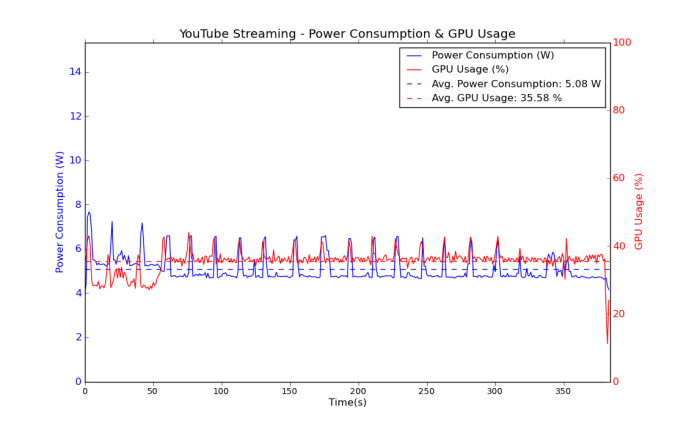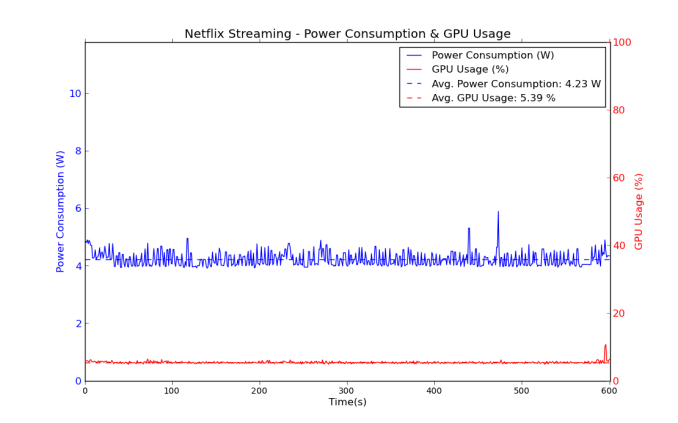ECS LIVA Review: The Nettop Rises Again
by Ganesh T S on July 18, 2014 9:15 AM ESTHTPC Credentials - Network Streaming and Local Playback
Given the ECS LIVA's fanless nature and the presence of Intel HD Graphics, we expect most purchasers to use it as a media playback machine / HTPC. Given the specifications, it is quite clear that we are not looking at a madVR capable machine, but one targeted at the entry-level / average HTPC user or someone looking for a HTPC to put in a second or third room (non-primary HTPC). There are two HTPC aspects that we will explore in this section, one related to network streaming (OTT services), and the other related to local file playback. Prior to that, we have a small sub-section dealing with refresh rate accuracy.
Custom Refresh Rates
We found last year that Haswell provided excellent display refresh rate accuracy, but never tested out Bay Trail systems on that aspect. Fortunately, our experience with the ECS LIVA put any lingering doubts to rest.
The gallery below presents some of the other refresh rates that we tested out. The first statistic in madVR's OSD indicates the display refresh rate. madVR itself drops plenty of frames to keep up with the playback requirements (which is expected given the system specifications), but those are not related to the refresh rate of the display.
Network Streaming Efficiency
Evaluation of OTT playback efficiency was done by playing back our standard YouTube test stream and five minutes from our standard Netflix test title. Using HTML5, the YouTube stream plays back a 720p encoding, while Adobe Flash delivers a 1080p stream. The power consumption at the wall as well as the GPU usage while playing them on Mozilla Firefox are provided in the graphs below.
YouTube Streaming - HTML5
YouTube Streaming - Adobe Flash
Netflix streaming evaluation was done using the Windows 8.1 Netflix app. Manual stream selection is available (Ctrl-Alt-Shift-S) and debug information / statistics can also be viewed (Ctrl-Alt-Shift-D). Statistics collected for the YouTube streaming experiment were also collected here.
Playback using Adobe Flash is leaner on the resources compared HTML5 streaming. This is likely due to the fact that the HTML5 stream delivers a 720p version which needs scaling in addition to decoding for display on a 1080p screen. In any case, the power numbers for YouTube and Netflix streaming are the lowest that we have seen on a desktop machine so far.
Decoding and Rendering Benchmarks
In order to evaluate local file playback, we concentrate on XBMC's native decoding / rendering (used by the average HTPC user) and the combination of native DXVA decoding with EVR and EVR-CP (using MPC-HC v1.7.3). The following table summarizes the GPU usage and power consumption at the wall in various cases. Numbers in bold indicate visible dropped frames.
| ECS LIVA - Decoding & Rendering Performance | ||||||
| Stream | EVR | EVR-CP | XBMC | |||
| GPU Load (%) | Power (W) | GPU Load (%) | Power (W) | GPU Load (%) | Power (W) | |
| 480i60 MPEG2 | 75.44 | 6.22 | 69.64 | 6.14 | 80.62 | 7.19 |
| 576i50 H264 | 72.94 | 5.81 | 68.85 | 5.81 | 42.16 | 4.91 |
| 720p60 H264 | 74.46 | 6.87 | 79.47 | 7.55 | 86.32 | 6.86 |
| 1080i60 MPEG2 | 92.78 | 8.17 | 98.44 | 8.40 | 87.73 | 7.82 |
| 1080i60 H264 | 98.78 | 8.51 | 95.71 | 8.44 | 91.65 | 8.07 |
| 1080i60 VC1 | 98.03 | 8.49 | 97.88 | 8.52 | 88.95 | 7.98 |
| 1080p60 H264 | 80.63 | 7.39 | 98.37 | 8.63 | 88.63 | 8.06 |
| 1080p24 H264 | 36.80 | 5.30 | 45.89 | 5.70 | 43.23 | 5.20 |
| 4Kp30 H264 | 67.39 | 6.47 | 99.13 | 8.58 | 70.36 | 6.59 |
The ECS LIVA is more than sufficient for XBMC playback of common media files (DVD - 480i60, Blu-ray - 1080p24 etc.). It is only when it comes to high resolution / high frame-rate interlaced videos that problems start creeping in. That said, I do believe that the average / entry-level HTPC user's playback requirements probably don't include such video streams.
HD audio bitstreaming works if one downloads the audio drivers directly off Intel's website. However, with the Netflix Windows 8.1 app in our setup (ECS LIVA + Pioneer Elite VSX-32 + Sony KDL46EX720), attempts to bitstream Dolby Digital Plus resulted in the video completely freezing. This is the same bug that I talked about in the Intel NUC review at the beginning of the year, and it continues to be unresolved to this date. In fact, this problem is not restricted to the Netflix app, but even XBMC, if it attempts to bitstream Dolby Digital Plus in non-WASAPI mode. As a non-primary HTPC, users are probably not going to use the ECS LIVA to bitstream HD audio. Intel should still look into it for using their iGPU in a primary HTPC. The problem is quite clearly in the Intel HD Audio driver, and a fix for that is long overdue.



















55 Comments
View All Comments
eastcoast_pete - Saturday, July 19, 2014 - link
I second the comments regarding netbooks made here. Trying to do some actual writing on touch screens is a pain, even on larger tablets. I considered Chromebooks , but Google's "required tethering" approach doesn't work for me. I'd love to see MS helping to push a bunch of "Chromebook killers" into the market - Windows netbooks in the $180 - $ 300 price range with the new Baytrail Celerons, 3 or 4 Gb RAM, a 10" -12" high-res screen (no-touch), USB 3 port(s), micro-SXDC slot, and either 64 Gb eMMC 5.0 (lower price point) or 128 Gb SSD (higher). This nettop shows that it could be done. Now, if only MS would see the opportunity and seize it!esgreat - Sunday, July 20, 2014 - link
With max power around 12W and idle power around 4W, I guess I could run this thing at nominal speed with a power bank!Laststop311 - Sunday, July 20, 2014 - link
I personally would rather pay the 800 for the i7-4770r brix system. It must be rough to not have enough money to get the things u want. I don't know how to compromise so news about these systems heavily bores me.AmericanIdle - Friday, August 15, 2014 - link
You were so bored by this story that you felt inspired to leave a comment?The Brix is not fanless, and thus not silent. Also, it uses about 10 times as much power, which matters if you care about the future of the planet. It must be rough to know the price of everything and the value of nothing. I hope you learn how to compromise someday!
Haravikk - Thursday, July 24, 2014 - link
I don't really see the appeal of going so small with so many sacrifices personally, I mean Thin Mini-ITX cases like the Akasa Euler are still tiny machines (about Mac Mini size but a bit taller) and you can put proper desktop processors in them! You can even build a basic dual core system at a very reasonable price. This is why I never liked the idea of a Netbook; they never saved enough money to justify their horrific performance IMO, even when used for nothing but browsing (especially with the increasing demands of modern web content).